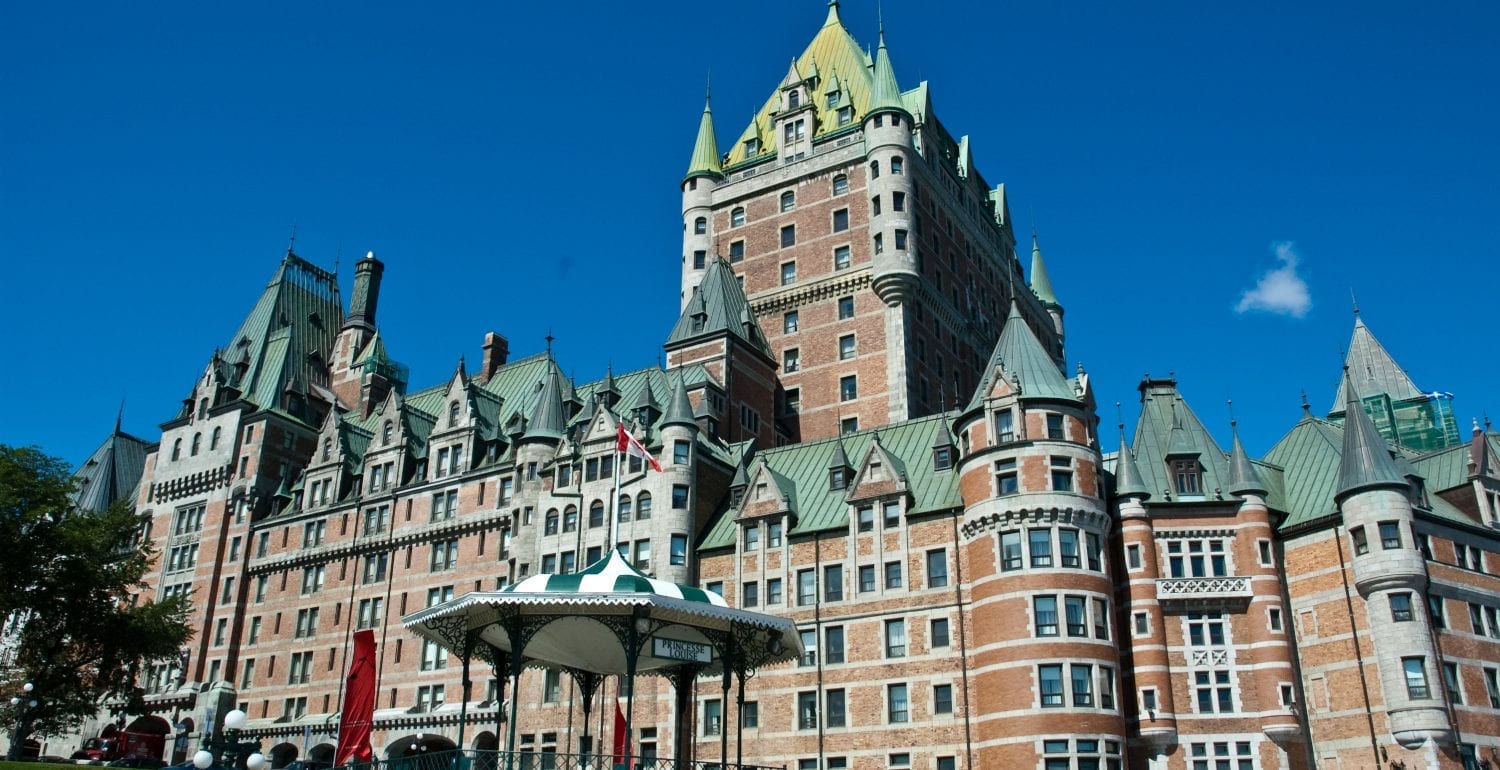Under the terrace: The prestigious Saint-Louis Forts and Châteaux archeological site

Visitors taking in the magnificent Dufferin Terrace at the foot of the famous Château Frontenac in Quebec City peer into the surprising glass cubes under their feet to see what the terrace is hiding. Usually, the contrast between the darkness under the terrace and the outside light makes it hard to see. They must go to the Lorne kiosk, where Parks Canada guides invite them down the stairs under the terrace to visit the most prestigious archeological remains of the colonial period in Canada: the residences of the six governors of New France and Canada who lived here between 1620 and 1834. The carefully laid out site is vast, comfortable and well lit. These imposing archeological remains, protected by the terrace for decades, as well as several interpretive panels and numerous artifacts, reveal the almost royal lifestyle of the high-ranking colonial officials living here.
To learn more…
Saint-Louis Forts and Châteaux: National Historic Site of Canada
No other place in Canada so clearly shows the power of the colonial government, and few archeological sites have yielded as many artifacts (more than a million!). The tour of these impressive remains begins at the foot of the immense outdoor cold room that ensured the British governors a supply of fresh produce. It continues into the lower court between the perimeter and the last British governor’s residence, which was destroyed by fire in 1834, then to the remains of the French-era Château Saint-Louis. Under these interlocking buildings, the high stone and brick walls of the laundry, kitchen and pantry, with their many hearths and fireplaces, can still be seen. The root cellar dating from 1694 and one of the walls of the first Château Saint-Louis, built in 1648, transports visitors to the early French colonial days.
Large colour drawings reconstruct the rooms in their entirety. Digital images provide a 360-degree view of the successive Châteaux Saint-Louis and some of their rooms. Jewelry, seals, luxurious dinnerware, bottles of wine, a refined chamber pot, weapons and tools illustrating the occupants’ lifestyle, all found on site, are contained in window displays. Visitors can learn more about their history by joining one of the daily guided tours.
An exceptionally well-preserved site
In 1838, four years after the fire that destroyed the last Château Saint-Louis, the first public terrace measuring about 50 metres was built over the remains of the châteaux, protecting them from weather and vandalism. Durham Terrace was so popular that it was extended by around 35 metres in 1854. By 1879, it was 430 metres long. Dufferin Terrace has not changed since. It was named in honour of Lord Dufferin, Governor-General of Canada, who designed it in collaboration with municipal engineer Charles Baillairgé.
The 2005–2007 main archeological dig at the exceptionally rich and well-preserved site, in preparation for the 400th anniversary of Samuel de Champlain’s founding of Quebec City, uncovered 500,000 artifacts and 500 architectural remains.
Chronology of the site’s occupation
In 1620, to better protect his establishment, Samuel de Champlain built the first fort, which he named Saint-Louis, at the top of Cape Diamond. Six years later, he had a stone residence constructed there. The residence was enlarged by the first official governor of New France, Charles Huault de Montmagny, and became the first Château Saint-Louis: a single-storey dwelling measuring 26 x 7 metres, completed in 1648.
In 1690, Governor Frontenac built a new Château Saint-Louis, fortified this time. Its two storeys and lateral wings made it four times bigger than its predecessor. It was completed in 1723, under Governor Beauharnois.
The 2005–2007 archeological dig uncovered the remains of the Saint-Louis Forts’ four defensive works, from the first commissioned by Champlain in 1620 to the additions made by Frontenac in 1690, and the remains of the French Châteaux Saint-Louis, the first of which was erected by Montmagny.
The building was heavily damaged by shelling during the British siege of Quebec City in 1759. The British demolished part of it but restored what could be salvaged. A few years later, Governor Frederick Haldimand found the quarters too cramped and had Château Haldimand constructed a little further from the cliff. In 1892, all remnants of Château Haldimand were erased by the construction of the Château Frontenac hotel.
Governor James Craig preferred the location of Château Saint-Louis with its unobstructed view of the St. Lawrence and the region, and returned in 1807. He added to it and modernized it with a triangular pediment and columned veranda. This last Château Saint-Louis was destroyed by fire in 1834. Archeologists found numerous traces of it in the 2005–2007 dig.
The site was then occupied by Durham and Dufferin terraces and the Château Frontenac hotel. The Saint-Louis Forts and Châteaux archeological site is located at the Old Quebec heritage site, designated by the Quebec government and included on the UNESCO World Heritage list.





